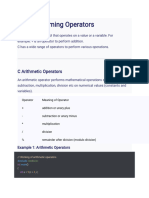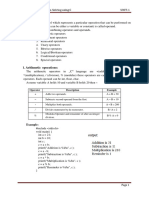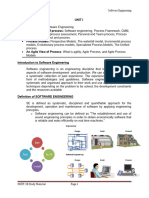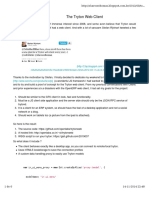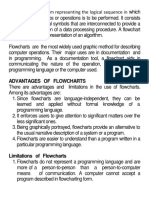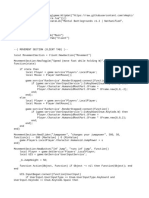0% found this document useful (0 votes)
33 views36 pagesPOP Module-2
This document covers the syllabus for a C programming module, focusing on operators, type conversion, decision control, and looping statements. It details various types of operators including arithmetic, relational, logical, bitwise, assignment, special, and conditional operators, along with examples of their usage. Additionally, it provides sample C programs demonstrating the use of loops and functions such as calculating Fibonacci series and checking for Armstrong numbers.
Uploaded by
kulsumhafsa0Copyright
© © All Rights Reserved
We take content rights seriously. If you suspect this is your content, claim it here.
Available Formats
Download as PDF, TXT or read online on Scribd
0% found this document useful (0 votes)
33 views36 pagesPOP Module-2
This document covers the syllabus for a C programming module, focusing on operators, type conversion, decision control, and looping statements. It details various types of operators including arithmetic, relational, logical, bitwise, assignment, special, and conditional operators, along with examples of their usage. Additionally, it provides sample C programs demonstrating the use of loops and functions such as calculating Fibonacci series and checking for Armstrong numbers.
Uploaded by
kulsumhafsa0Copyright
© © All Rights Reserved
We take content rights seriously. If you suspect this is your content, claim it here.
Available Formats
Download as PDF, TXT or read online on Scribd
/ 36








